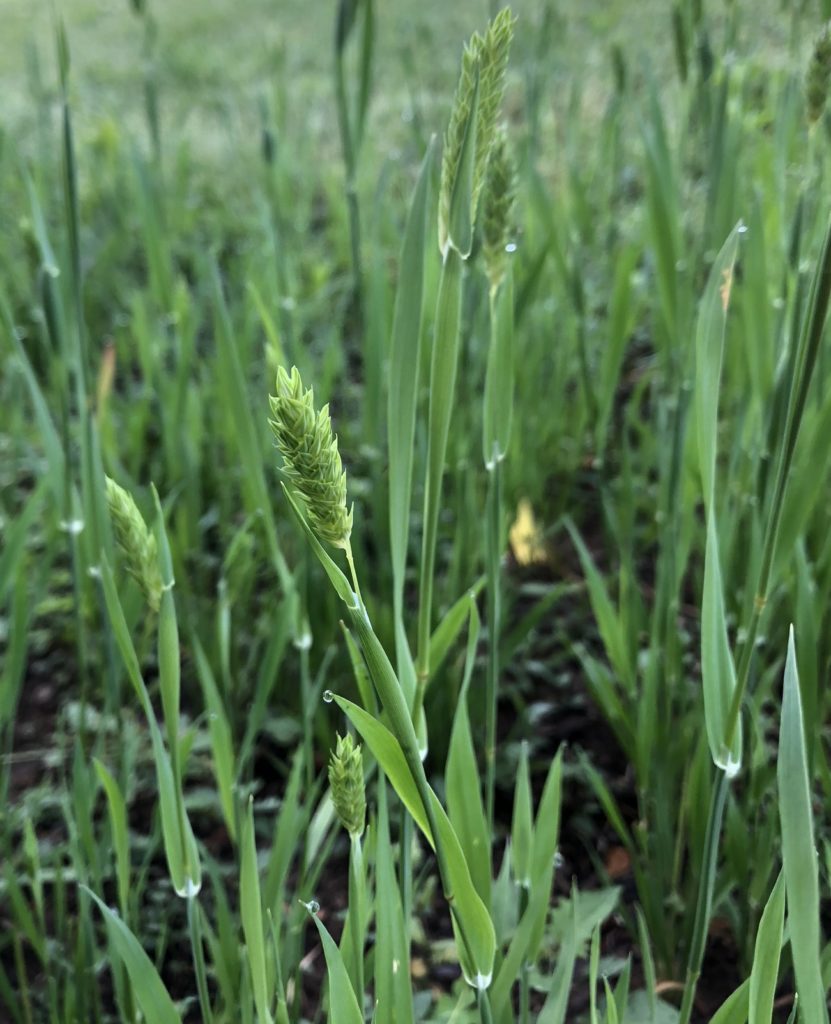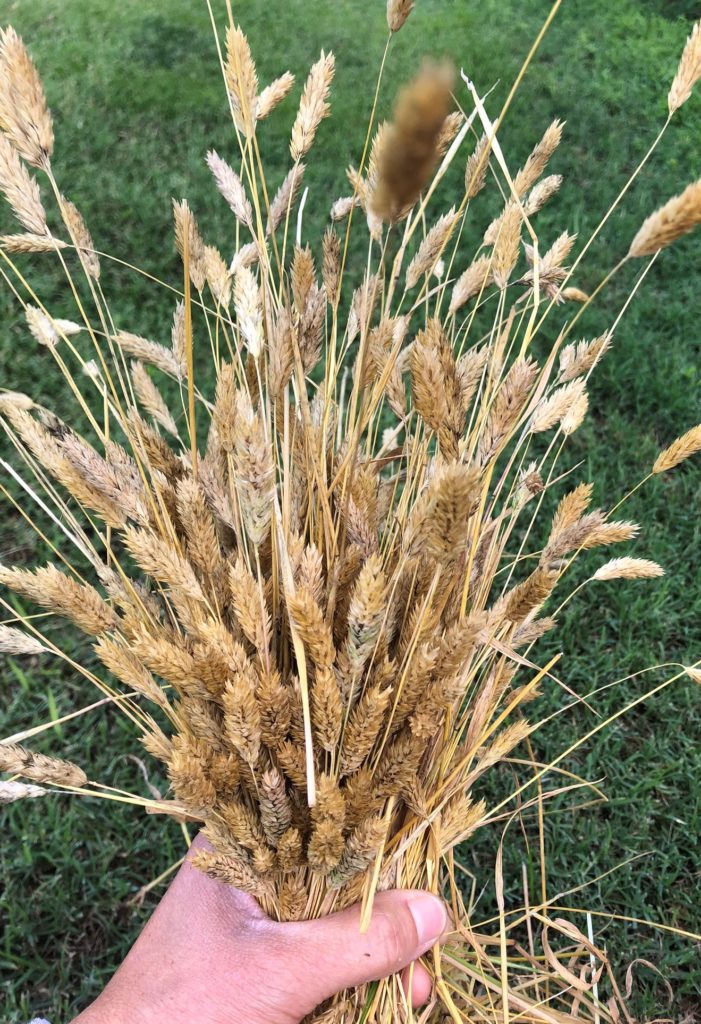
Closeup image of a young maygrass sprout whose seeds (once ripened) are edible!
Maygrass (Phalaris caroliniana, also known as Carolina canarygrass) is an annual grass native to North America that grows primarily along the coast and the Lower Mississippi Valley in the eastern US. It grows roughly 2-3 ft in height and produces a seed head with several dozen seeds that ripen in May and June, which is why we call it maygrass! These seeds are edible, like the seeds of other members of the Grass Family – such as wheat, barley, oats, and maize (corn). In addition to carbohydrates, maygrass seeds are a good source of protein, iron, and thiamin.
Native people in North America collected maygrass seeds for food by at least 4400 years ago, if not earlier. Our best evidence for the consumption of maygrass is their recovery from paleofeces – ancient poop! – from Mammoth Cave and Salts Cave in Kentucky. Native groups began planting maygrass near their home sites around 4400 years ago in East Tennessee – far from its natural range along the Atlantic and Gulf coasts.

A handful of ripened maygrass which is rich in protein, iron, and thiamin.
Native peoples in the Midwest and Mid-South also grew a suite of other native plants around 4000 years ago, and even domesticated several of them, including squash and sunflower. These other plants ripen in the late summer and autumn, so maygrass would have been particularly useful, providing a carbohydrate-rich food source in late spring, when stored foods might have been running low after the long winter and before other wild fruits and cultivated plants ripened. Maygrass might have also held special meaning in some Native American cultures. For example, archaeologists have found thousands of maygrass seeds in ritual and burial contexts at sites dating to around 900 years ago.
Maygrass is not easy to spot in East Tennessee today. With the disruptions caused by Europeans beginning in the 16th century, native peoples in the region stopped growing maygrass and other “lost crops”, such as goosefoot (Chenopodium berlandieri) and marshelder (Iva annua). But keep an eye out for other native grasses and herbaceous plants that we might call “weeds” – those plants may have edible seeds that other people consider to be important food crops!